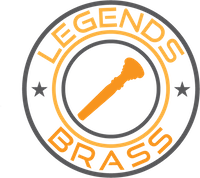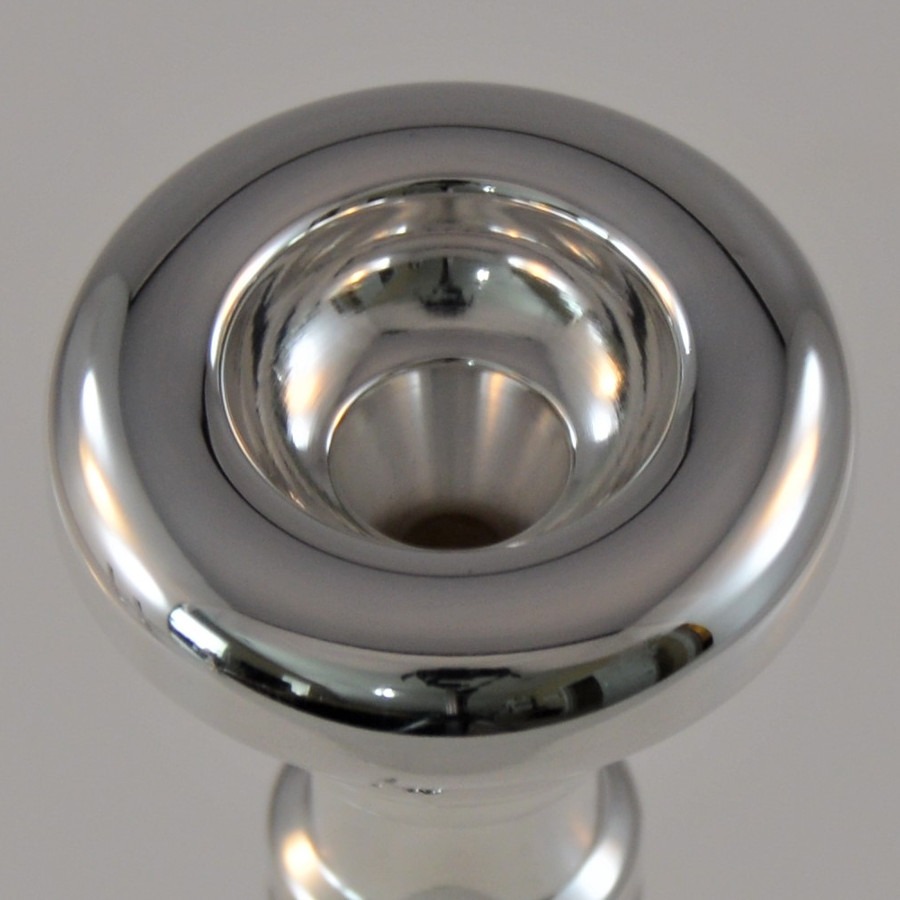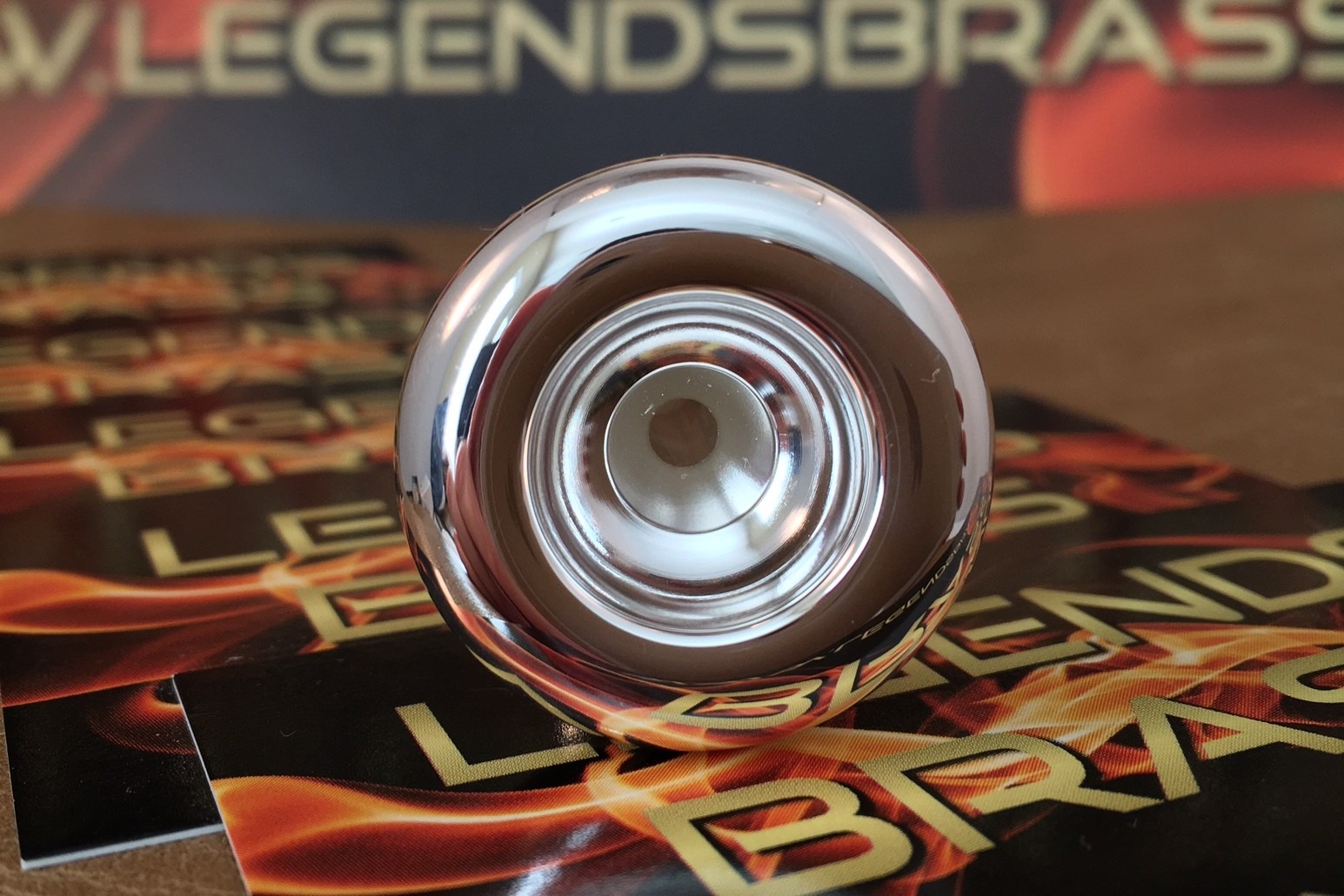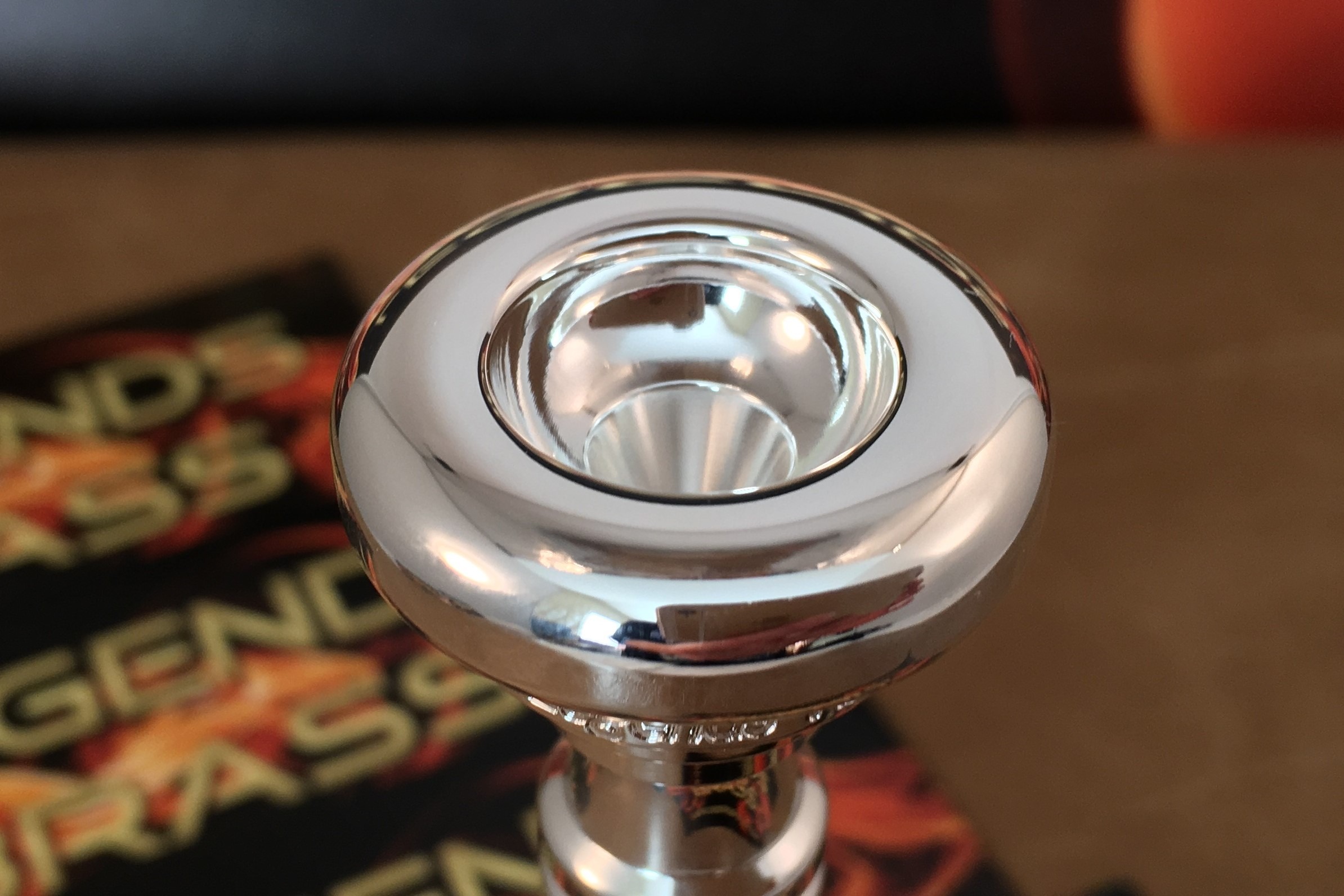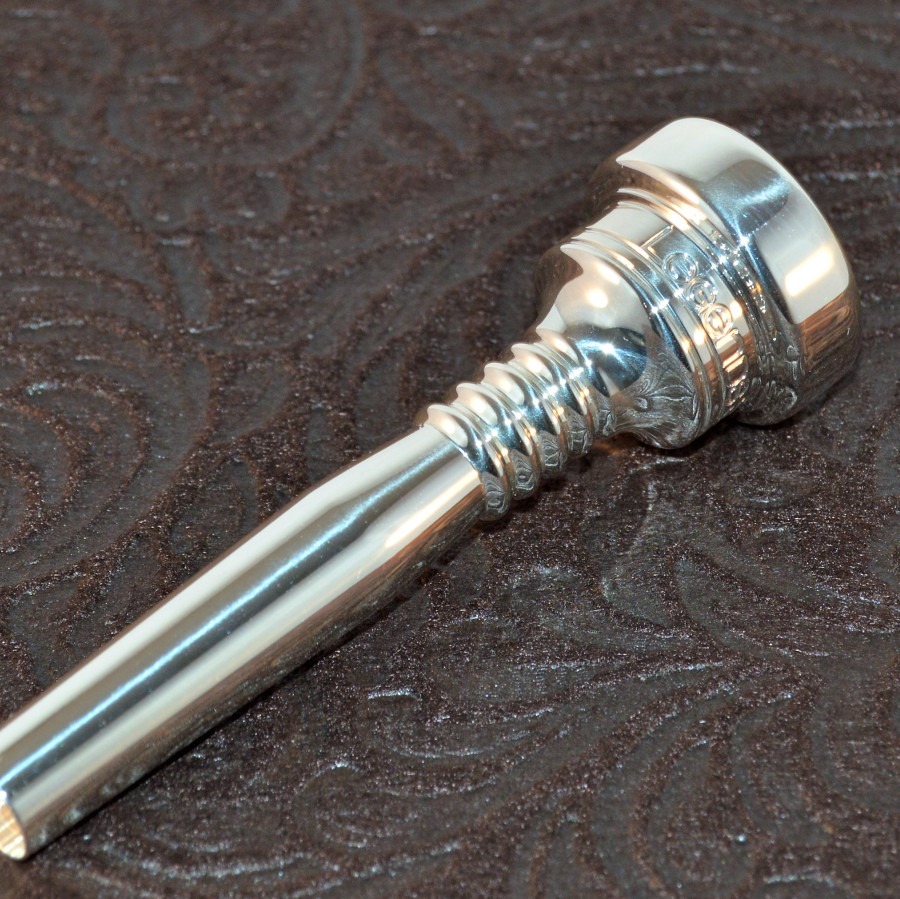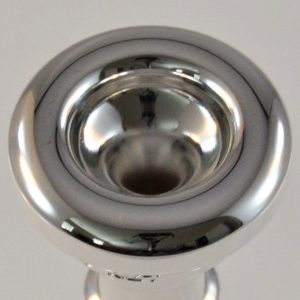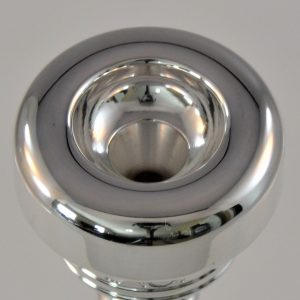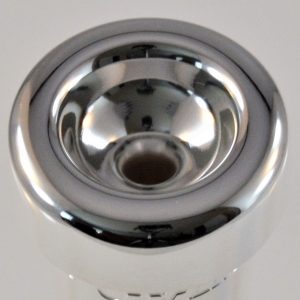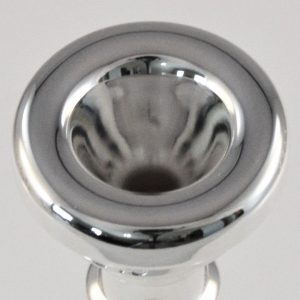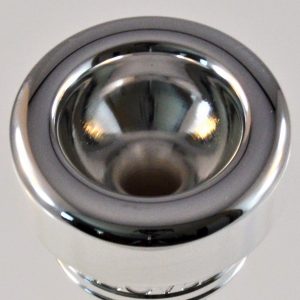Description
This mouthpiece was designed in honor of the legendary Harry James. Mr. James was famous for his astonishing technical capabilities and lovely tone. He spent five decades delighting audiences performing with various big bands, orchestras and jazz groups. He is truly a trumpet legend!
The Legends HJ is based on a double-cup mouthpiece like those played by Harry James. The rim is rounded on the outside and sharp on the inside. It’s comfortable, but will support quick-tonguing motifs and technical runs. The inside rim diameter is .600″. The shallow upper cup supports a brilliant tone in the upper register, while the lower cup ensures a full mellow sound in the lower range. The throat is a standard #27 with the Legends enhanced throat cylinder length. The backbore is a Legends Vegas, which has a nice balance of sizzle and core. The HJ is perfect for the player looking to perform extremely technical upper register pieces with ease, but without sacrificing tone quality in the middle and lower registers.
See a review of this mouthpiece by Chuck Par-Due here.
*Now also available with #26 throat, which is identical to what Harry James used.
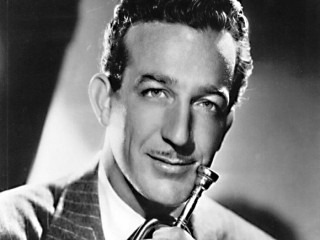
Harry James Bio:
Harry James was born on March 15, 1916 in Albany, Georgia. His father was a trumpeter and bandleader with a traveling circus, where his mother was an acrobat and horseback rider. Harry began performing with the circus band at a young age. He started on drums at age four and was playing cornet by age eight. By age 12 he was leading the show’s Second Unit Band. His father oversaw an intense practice regimen for him, with significant time spent on Arban Trumpet exercises each day. He wasn’t allowed to go outside to pursue his other love, baseball, until he had mastered each day’s exercises. Harry later attributed his success to this practice regimen. His father chose compositions by W.C. Handy, as well as standards of the day such as “Tiger Rag” and “Wolverine Blues” for the circus band repertoire. This was where Harry first learned to love the blues and jazz.
By the age of 13, Harry’s family had left circus life and settled in Beaumont Texas. In 1931, at the age of 15, Harry entered the Texas Band Teacher’s Association Annual Eastern Division contest. He won first place performing Herbert Clark’s “Neptune’s Court”. He decided at that point to pursue music as a career. He left school after junior high graduation and began a career which would eventually make him one of the world’s most successful and beloved trumpet players ever. His first audition was for Lawrence Welk, but he did not get the job. Soon after, he auditioned for Joe Gill and his “Phillips Flyers” and was hired because he could easily play “St. Louis Blues”, which was their most difficult chart. During this time he was hired by countless bands and orchestras and had a prolific performance schedule. By 1935, Harry was playing in jazz drummer Ben Pollack’s band, but soon left and, in 1937, joined Benny Goodman’s orchestra. Three trumpet players in Goodman’s orchestra, Harry James, Ziggy Elman and Chris Griffin were known as the “powerhouse trio”, one of the most admired big band trumpet sections in jazz history. While in Goodman’s orchestra, Harry collaborated with Teddy Wilson and others to record “One O’Clock Jump” and “It’s the Dreamer in Me”. These two songs reached Billboard’s Top 10 for 8 weeks. On January 16, 1938 Harry performed in Benny Goodman’s orchestra at Carnegie Hall. This performance is widely regarded as the single most important jazz concert in history. It brought jazz into the world of respectable music. And Harry’s solo in “Sing Sing Sing” was the crowning jewel of the evening. In 1939 he debuted his own big band but it only enjoyed mediocre success at first. He used “Chiribiribin” as his theme song for this group. Then in 1941 he added a string section and the group became known as “Harry James and His Music Makers”. This group enjoyed phenomenal commercial success, with pop hits such as “You Made Me Love You” and “I’ll Get By”. By the mid 1950’s his success was well established and his music began to shift back toward jazz. Harry James’ music and groups continued to evolve and he continued record and perform on stage until his death in 1983.
Playing Style and Equipment:
Harry James’ first mouthpiece was a Holton Heim 2, but he switched to a Parduba Double-Cup mouthpiece while with Benny Goodman. He credited this switch to revolutionizing his playing control and played it for the rest of his career. His upper register was brilliant and full, while his low range had an almost flugel-like warmth. His playing style has been described as bold and brassy. He was profoundly technically proficient, often using techniques such as half valve and lip glissandi, valve and lip trills, heavy vibrato and valve tremolos. His range, fingering and tonguing were incredible. He liked to play what he referred to as a “rolling style” with many notes in two or four bar phrases, which required perfect control of the instrument (Twomey, 2007). Harry played Selmer Paris Balanced Action trumpets until the mid 1950’s when he switched to a King Silver Sonic Symphony custom made balanced action model. He believed correct breathing was the key to playing well, and it is said that there was never a red circle on his lips after playing because his lips were so taut against the mouthpiece (Twomey 2007).
Although he shared with us five decades of some of the best trumpet music ever heard, it wasn’t quite enough. Trumpet fans today still wish for more!
References:
- Wikipedia. n.d. Harry James. Retrieved 8/20/2019, from https://en.wikipedia.org/wiki/Harry_James
- Encyclopedia Britannica. 7/2/2019. Harry James. Retrieved 8/20/2019, from https://www.britannica.com/biography/Harry-James
- Twomey, John. 2007. Jazzsight Profile: Harry James “The Man With The Horn”. Retrieved 8/21/2019, from www.jazzsight.com/jazzsightprofiles.html
Legends Brass is in no way affiliated with Harry James or the estate of Harry James. All web links, videos and information found on this site are for educational and entertainment purposes only. No relationship between the two parties is implied. Legends Brass uses this information solely to honor the accomplishments and legacy of this great performing artist.

